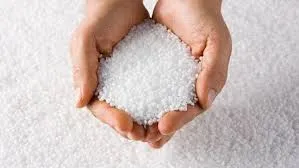Chemical Used for Treatment of Water
Water is an essential resource for all forms of life on Earth, and its quality is critical for health, environmental sustainability, and economic development. The treatment of water, whether for drinking, industrial use, or irrigation, is a complex process that often involves the application of various chemicals. These chemicals play pivotal roles in purifying water by removing contaminants, pathogens, and impurities that could pose risks to human health and the environment.
One of the most commonly used chemicals in water treatment is chlorine. Chlorine is a powerful disinfectant that effectively kills bacteria, viruses, and other pathogens commonly found in water sources. When added to drinking water, chlorine reacts with organic matter to form chlorinated compounds, which help maintain a residual disinfectant in the distribution system. This residual is crucial for ensuring water remains safe from recontamination as it travels from treatment facilities to consumers. However, there are concerns over the formation of trihalomethanes (THMs) and other byproducts of chlorination, which can be harmful in high concentrations.
Another important chemical for water treatment is coagulants, such as aluminum sulfate (alum) and ferric chloride. Coagulants are used to remove suspended solids and turbidity from water. When added to raw water, these chemicals cause tiny particles to clump together, forming larger aggregates called flocs. This process, known as coagulation, is followed by sedimentation, where flocs settle to the bottom of treatment tanks, leaving clearer water above. Coagulation is particularly effective in treating surface waters with high organic matter and sediment content.
In addition to chlorine and coagulants, other chemicals are also utilized for specific treatment purposes. For instance, lime (calcium hydroxide) is commonly used to adjust the pH of water, which is crucial for optimizing the effectiveness of other treatment chemicals and ensuring that water is neither acidic nor alkaline. The correct pH level enhances the solubility of certain minerals and helps precipitate heavy metals, making them easier to remove from the water.
chemical used for treatment of water

Activated carbon is another vital chemical employed in water treatment. It effectively adsorbs organic compounds, chlorine, and odor-causing substances, enhancing taste and smell. Activated carbon filters are widely used in both municipal and household water treatment systems. These filters can reduce the concentration of pollutants, making the water safer and more palatable for consumption.
Additionally, ozone is gaining popularity as an alternative disinfectant in water treatment processes. Ozone is a powerful oxidant that can eliminate a broader spectrum of pathogens compared to chlorine without leaving harmful byproducts. However, the use of ozone requires careful handling as it is unstable and needs to be generated on-site, which may increase operational complexities.
Furthermore, the use of sodium hypochlorite as a disinfectant is common, especially in situations where chlorination is impractical or undesirable. This strong oxidizer is effective against a wide range of pathogens and is typically preferred in emergency situations or where rapid disinfection is necessary.
While chemicals are necessary for effective water treatment, there is a growing emphasis on sustainable practices and reducing chemical use due to environmental concerns. For example, bioremediation techniques and the use of natural coagulants derived from plant sources are being explored as eco-friendly alternatives to traditional chemicals. These approaches aim to achieve safety and purity in water while minimizing the ecological footprint of the treatment process.
In conclusion, the treatment of water with chemicals is an integral part of ensuring safe and clean water for consumption and use. The selection of chemicals—ranging from chlorine, coagulants, and activated carbon to ozone—depends on various factors, including the quality of the source water, desired outcomes, and regulatory requirements. As the world confronts increasing water scarcity and pollution, the challenge remains to balance effective treatment with sustainability, paving the way for innovative practices that could shape the future of water treatment.

